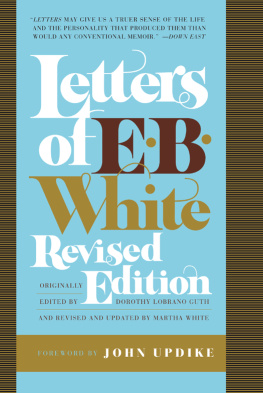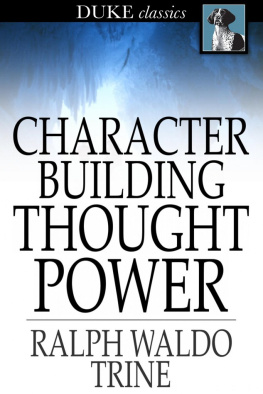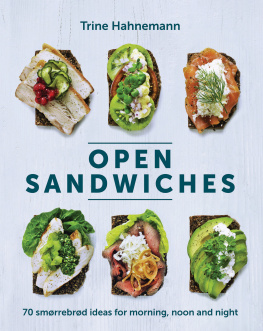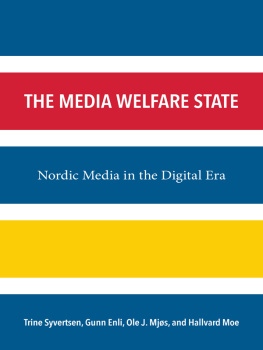Trine Falbe - White Hat UX
Here you can read online Trine Falbe - White Hat UX full text of the book (entire story) in english for free. Download pdf and epub, get meaning, cover and reviews about this ebook. year: 2017, genre: Computer. Description of the work, (preface) as well as reviews are available. Best literature library LitArk.com created for fans of good reading and offers a wide selection of genres:
Romance novel
Science fiction
Adventure
Detective
Science
History
Home and family
Prose
Art
Politics
Computer
Non-fiction
Religion
Business
Children
Humor
Choose a favorite category and find really read worthwhile books. Enjoy immersion in the world of imagination, feel the emotions of the characters or learn something new for yourself, make an fascinating discovery.
- Book:White Hat UX
- Author:
- Genre:
- Year:2017
- Rating:4 / 5
- Favourites:Add to favourites
- Your mark:
- 80
- 1
- 2
- 3
- 4
- 5
White Hat UX: summary, description and annotation
We offer to read an annotation, description, summary or preface (depends on what the author of the book "White Hat UX" wrote himself). If you haven't found the necessary information about the book — write in the comments, we will try to find it.
White Hat UX — read online for free the complete book (whole text) full work
Below is the text of the book, divided by pages. System saving the place of the last page read, allows you to conveniently read the book "White Hat UX" online for free, without having to search again every time where you left off. Put a bookmark, and you can go to the page where you finished reading at any time.
Font size:
Interval:
Bookmark:
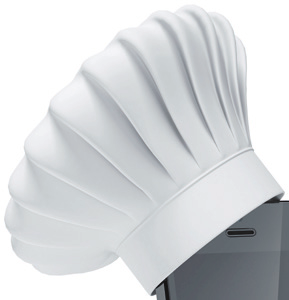
The Next Generation in User Experience
White Hat
Trine Falbe
Kim Andersen
Martin Michael Frederiksen
Copyright 2017
Trine Falbe, Kim Andersen and Martin Michael Frederiksen.
All rights reserved.
Printed in Denmark.
Chocolate packaging illustrations by Jovana Randjelovic.
Translated from Danish by Per Fischer.
No part of this publication may be reproduced, stored in or introduced into a retrieval system, or transmitted, in any form, or by any means (electronic, mechanical, recording, photocopying, or otherwise), without the prior permission of the publisher. Requests for permission should be directed to info@whitehatux.com.
Sorry about the legalese. We are in fact very nice people. If you would like to use the contents of the book for something that will make the world a better place, then write to us - we are happy to help if we can.
The web addresses referenced in this book were live and correct at the time of the books publication but may be subject to change.
ISBN 978-87-994915-8-2
E-ISBN 978-87-994915-9-9
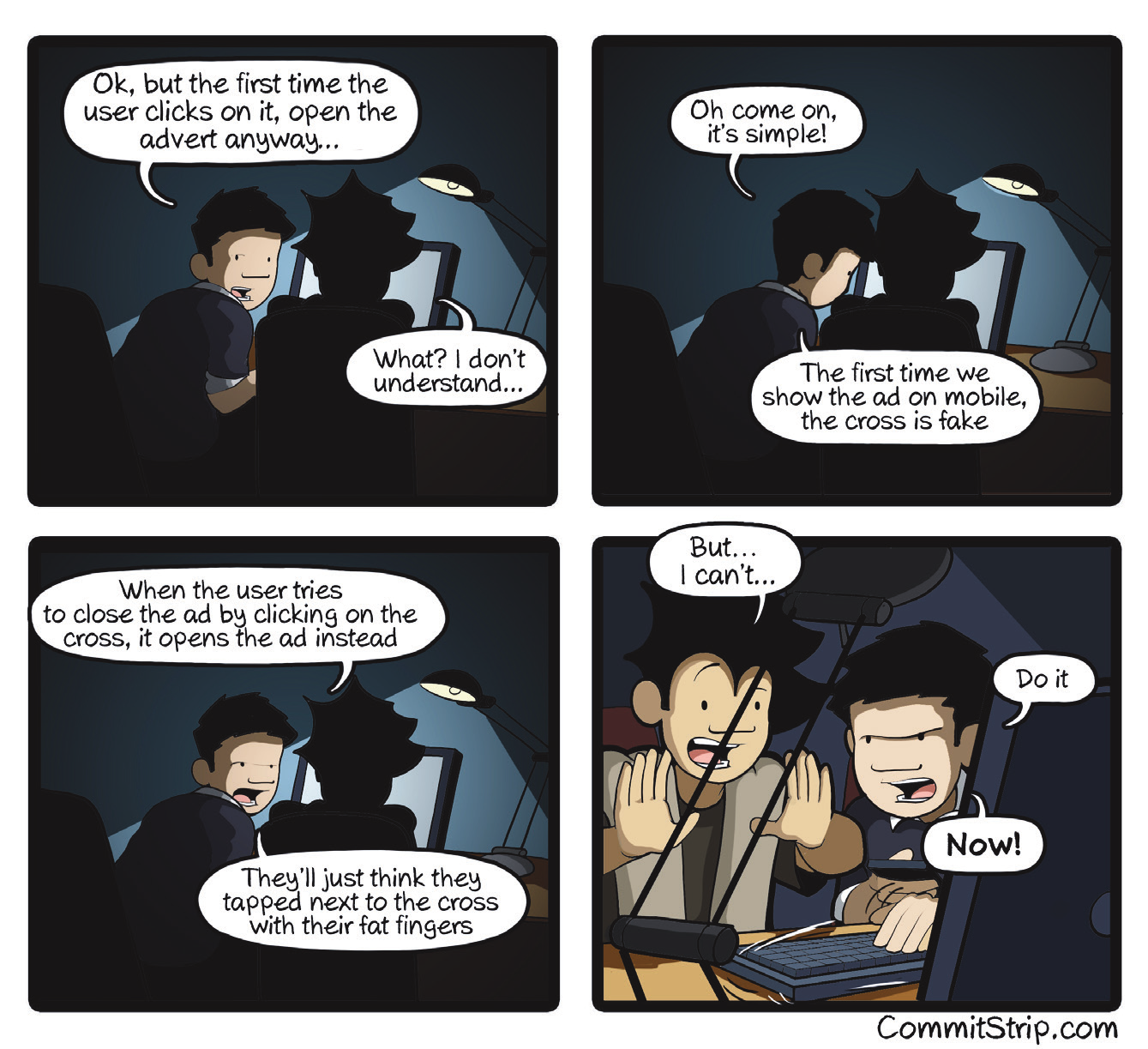
Marketing, IT and sales people all over the world work hard every day to make deceptive user experiences. You are better than that.
Design or Decoration
Discover
White Hat, Grey Hat and Black Hat UX
A Brief Introduction to UX
Privacy Zuckering
Black Hat UX: 12 Design Patterns
UX Gone Wrong
Evaluate
The Competition is Only a Click Away
Test Methods in UX
Test Reports and Release Notes
Windows 10 Privacy
Quality Assurance and Quality Control
Design or Decoration
Baseline
The Principle of Least Astonishment
Discover
UX and Scrum
White Hat, Grey Hat and Black Hat UX
Shitstorms and Candystorms
A Brief Introduction to UX
Grey Hat UX: 7 Anti-Patterns
Privacy Zuckering
Black Hat UX: 12 Design Patterns
Join the Light Side of the Force
UX Gone Wrong
White Hat UX Design Patterns
From Dark Patterns to White Hat UX
Becoming Proficient
Things Take Time
Strategic White Hat UX
The Dark Set


DESIGN OR
DECORATION?
ou are reading this book at a time when the business of mainstream technology is not to create useful products and Y services for people but to create products and services that exploit one group of people for the benefit of another group.
In Silicon Valley parlance, the former group are called users and the latter group are called customers. This is the business of nearly every mainstream technology company today, including Facebook, Google, and Snapchat. These companies care deeply about what they call UX (User Experience), but they do so not for the reasons that you might think.
When a company like Facebook improves the experience of its products, its like the massages we give to Kobe beef: theyre not for the benefit of the cow but to make the cow a better product.
In this analogy, you are the cow.
Preface
You might be wondering why these companies do this. The answer is simply that its their business model; monetising their users is how they make money. This is a systemic problem that stretches back all the way to the way in which these companies are funded and the the socio-economic system in which they are founded.
Soshana Zuboff from Harvard Business School calls this socio-economic system Surveillance Capitalism. Surveillance Capitalism is what you get when you combine the accrual of wealth that is the hallmark of Capitalism with the accrual of information that you get from surveillance. It creates a feedback loop between the two where technology acts as an amplifier that accelerates the gap between the haves and the have-nots while simultane-ously eroding our democratic institutions and human rights.
I call the business model of companies operating within Surveillance Capitalism people farming.
People farming is the process of obtaining, storing, and exploit-ing information about people. In industry parlance, we call this information data and the aggregations of your data held by corporations are known as profiles. These profiles, far from being static pieces of paper in a manilla envelope somewhere, are dynamic simulations of you. The more data these companies have about you, and the more time they have to keep analysing them using their algorithms, the more accurate these simulations get. And the more accurate your simulation gets, the better these corporations can exploit you.
At this point, if youre somewhat repulsed and perhaps a little angry or scared, good. Thats the correct response to what is, quite frankly, an entirely unpalatable system that is toxic to social justice, democracy, and our human rights.
Preface
This is where the role of a UX designer and the marketing team comes in.
The goal of the UX designer in mainstream technology is to create a seamless experience that will distract or amuse you.
Other goals are to addict you to the product so that you will keep using it (and thus divulge even more information about yourself). Your focus must be kept on the features of the product, the delight of the experience, and on the value you derive from the product so that you do not worry about what the product is actually doing (which is that is it tracking, storing, and analysing your behaviour so that it can exploit it for the benefit of the company and its customers).
If youre happy with this, you can stop reading now. You have a potentially lucrative career in UX Design to look forward to.
Congratulations, may it bring you much money, a big house, and a fancy car.
If, however, you want to do better and make meaningful experiences that truly improve peoples lives, read on.
All design is influence but design without ethics is manipulation.
In fact, it isnt design at all; it is decoration.
Design is the holistic process of creating organisations, processes, and practices that enable the production of experiences that improve peoples lives. Decoration is the process of hiding the true intent of a product or service so as to trick people into using them when they otherwise would not.
Design attempts to empower people; decoration attempts to make sure an otherwise unpalatable system is not rejected by the people decorators call users.
Preface
So if you want to practice design, not decoration, start by removing the euphemism user from your lexicon. Instead, start calling people people. Its a small but important step.
But we dont have to stop there. Lets go further and adopt a core ethical framework to our work.
The Ethical Design Manifesto is one such framework.
Ethical Design is not rocket science. It has three basic tenets, all of which are actually extensions of one core tenet: respect.
Next pageFont size:
Interval:
Bookmark:
Similar books «White Hat UX»
Look at similar books to White Hat UX. We have selected literature similar in name and meaning in the hope of providing readers with more options to find new, interesting, not yet read works.
Discussion, reviews of the book White Hat UX and just readers' own opinions. Leave your comments, write what you think about the work, its meaning or the main characters. Specify what exactly you liked and what you didn't like, and why you think so.




